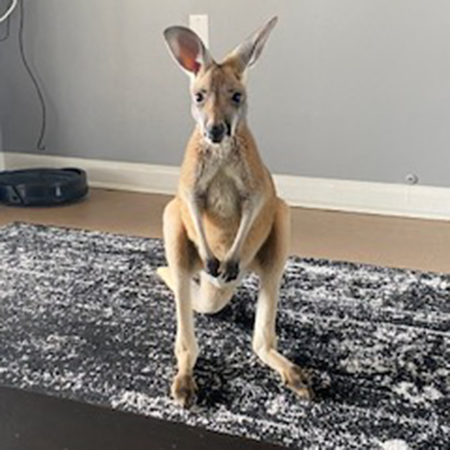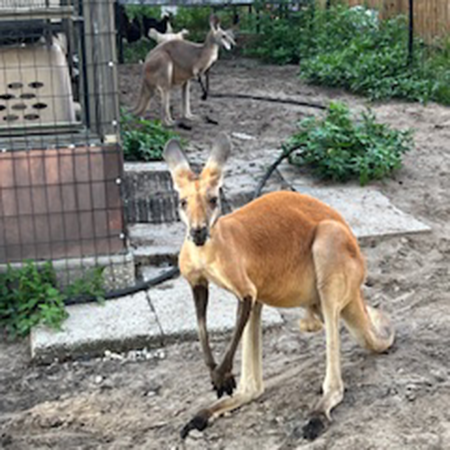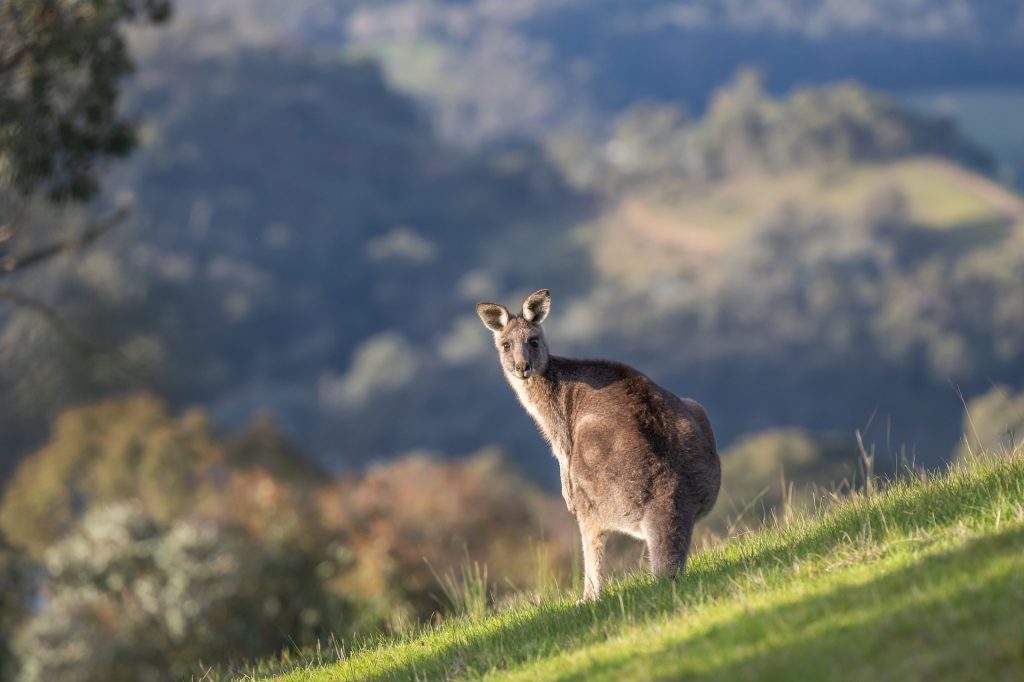General Information
Red Kangaroos are the largest species of kangaroo. They are often found on the open
plans of Australia.
Size
The Red Kangaroo is known as the largest marsupial and largest land mammal
in Australia. Adult males can weigh up to 180 pounds and stand up to five feet
tall while the females are much smaller and faster.
Appearance
They have short soft fur that is red to grayish on their backs and white on their
bellies. The males appear maroon with a white face while the females are
bluish grey.
Lifespan
The Red Kangaroo can live up to 22 years in the wild.
Habitat
They live in semi-arid to arid regions of the mainland of Australia. They prefer
open plains, deserts, woodlands, grass and shrub lands.
Diet
They are Herbivores that mostly graze on different types of grasses but also eat
leaves from shrubs and forbs which are also called herbs and flowering plants
They do not require a lot of water, and can survive on very little when it is scarce,
the plants that they consume provide them with adequate water intake along
with their nutritional requirements.
Reproduction
Females reach sexual maturity at 15-20 months while males reach theirs at
20-24 months. They can breed year round with favorable conditions.
Other facts
The Red Kangaroo have large very muscular hind legs and a long tail which they
use for balance, hopping and even standing. They have the ability to turn their
ears up to 180 degrees.




Basic Care
Feeding
We provide our kangaroos with a variety of fruits and veggies along with hay, grasses and dry food. We order our dry food from www.mazuri.com Provide a high quality diet of kangaroo pellets, lucerne (alfalfa hay), native grasses, leaves and shrubs. Kangaroos are lactose intolerant and cow’s milk will kill them.
For the baby Joey we order formula from: https://store.foxvalleynutrition.com On day 1 of the 29/35 feed every 4 hours. Over time we offer solids like hay, dry food, greens and veggies.
Water
Place water in the shade and off of the ground to prevent soiling and defecation in the water.
Cleanliness
Clean the enclosure daily, kangaroos often defecate where they feed.
Enclosure
Your kangaroo will need a lot of open space to hop and graze. They need to be kept in a secure environment with a tall, sturdy fence to prevent them from escaping.
Temperature
Kangaroos can tolerate cold temperatures if they can acclimate and grow a winter coat. However, if the temperatures drops below zero you will need to add heat lamps to keep their water barely defrosted.
Exercise
Young Kangaroos need exercise to develop strong bones and stretch their Achilles tendons. Encouraging your joey to be active and leave the pouch will help. Without the proper exercise they may not be able to walk or hop.
Handling
Joeys need to be allowed to have uninterrupted sleep between their feedings. Frequent handling or noise ca stress them out and result in injury, serious illness and even death.
Toileting
Joeys need to be toileted and their diaper changed every three to four hours.
Enrichment
Social activity such as living in a group provides enrichment Items such as stuffed animals or balls can provide tactile stimulate Objects for sparring or kicking can be introduced when the joey is young so that don’t see the items as a threat later on.
Scratching
Kangaroos enjoy being scratched on their chest and under their chins.
Requirements
For one or two kangaroos (red or gray) you are required to have a paddock that encloses 625 square feet and 8 feet high. For each kangaroo that you add you must increase the cage size by 25% of the original floor area You are also required to have a shelter or nest box that can shelter all of the animals simultaneously. A shelter or nest box is required for each enclosure. If you have landscaping or vegetation available for the animals to use as shelter they must still have access to a shelter especially during inclement weather conditions. Each Enclosure, habitat or paddock must have an accessible device that provides physical stimulation that is compatible for the species. The device is required to be non injurious and may include but is not limited to browsing and grazing materials.
